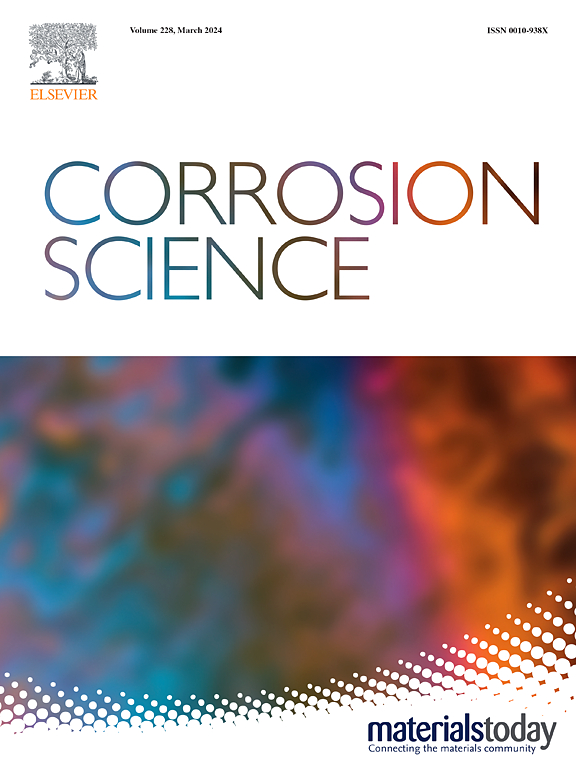SS310 不锈钢在 NaCl-KCl-MgCl2 和 NaCl-KCl-CaCl2 熔盐中的腐蚀行为比较研究
IF 7.4
1区 材料科学
Q1 MATERIALS SCIENCE, MULTIDISCIPLINARY
引用次数: 0
摘要
使用氯化物熔盐作为传热流体的聚光太阳能发电厂具有很高的腐蚀风险。我们对 SS310 不锈钢在 NaCl-KCl-MgCl2 和 NaCl-KCl-CaCl2 熔盐中的腐蚀行为进行了比较研究。MgCl2 的吸湿性明显高于 CaCl2,导致盐酸浓度的显著差异,从而直接导致基体腐蚀。MgCl2 的水解会产生大量 MgO,破坏 Cr2O3 膜,生成保护性较差的 MgCr2O4。相应地,在 NaCl-KCl-MgCl2 中形成了异质氧化物双分子层。在 NaCl-KCl-CaCl2 中,主要由 Ni(Fe,Cr)2O4组成的片状氧化物层可有效阻挡腐蚀性物质 H2O 和 HCl。本文章由计算机程序翻译,如有差异,请以英文原文为准。
Comparative study of corrosion behaviors of SS310 stainless steel in NaCl-KCl-MgCl2 and NaCl-KCl-CaCl2 molten salts
Concentrated solar power plants using chloride molten salt as heat transfer fluids imply high corrosion risks. The corrosion behaviour of SS310 stainless steel in NaCl-KCl-MgCl2 and NaCl-KCl-CaCl2 molten salts was comparatively studied. MgCl2 exhibits remarkably higher hygroscopicity than CaCl2, inducing a significant difference in the concentration of HCl that directly results in the matrix corrosion. The hydrolysis of MgCl2 produces large amounts of MgO that destroys Cr2O3 film and produce less-protective MgCr2O4. Correspondingly, a heterogeneous oxide bilayer is formed in NaCl-KCl-MgCl2. In NaCl-KCl-CaCl2, a lamellar oxide layer composed of primarily Ni(Fe,Cr)2O4 can effectively block the corrosive species H2O and HCl.
求助全文
通过发布文献求助,成功后即可免费获取论文全文。
去求助
来源期刊

Corrosion Science
工程技术-材料科学:综合
CiteScore
13.60
自引率
18.10%
发文量
763
审稿时长
46 days
期刊介绍:
Corrosion occurrence and its practical control encompass a vast array of scientific knowledge. Corrosion Science endeavors to serve as the conduit for the exchange of ideas, developments, and research across all facets of this field, encompassing both metallic and non-metallic corrosion. The scope of this international journal is broad and inclusive. Published papers span from highly theoretical inquiries to essentially practical applications, covering diverse areas such as high-temperature oxidation, passivity, anodic oxidation, biochemical corrosion, stress corrosion cracking, and corrosion control mechanisms and methodologies.
This journal publishes original papers and critical reviews across the spectrum of pure and applied corrosion, material degradation, and surface science and engineering. It serves as a crucial link connecting metallurgists, materials scientists, and researchers investigating corrosion and degradation phenomena. Join us in advancing knowledge and understanding in the vital field of corrosion science.
 求助内容:
求助内容: 应助结果提醒方式:
应助结果提醒方式:


